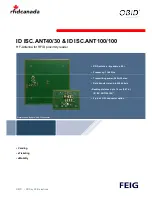
29
STEP 14
(Power Unit Hook Up)
1. Have a certified electrician run the power supply to
motor. Refer to the data plate found on the motor for
proper power supply and wire size.
RISK OF EXPLOSION!
This equipment has internal arcing or parts that may spark
and should not be exposed to flammable vapors. Motor
should not be located in a recessed area or below floor
level. NEVER expose motor to rain or other damp environ-
ments. DAMAGE TO MOTOR CAUSED BY WATER IS
NOT COVERED UNDER WARRANTY.
STEP 15
(Lift Start Up / Final Adjustments)
1. Make sure the Power Unit reservoir is full with 12
quarts of 10-WT hydraulic oil or Dexron-III automatic
transmission fluid.
2. Spray the inside of the Columns where the Slide Blocks
glide with a light lubricant or WD-40.
3. Test the Power Unit by pressing the push-button
switch. If the motor sounds like it is operating properly,
raise the lift and check all hose connections for leaks. If
the motor gets hot or sounds peculiar, stop and check all
electrical connections.
4. Before proceeding, double-check to make sure all Cables
are properly positioned within the grooves of ALL Sheaves/
Pulleys. Make sure all Cable Sheave retaining Pins and/or
Clips are secure.
5. Check to make sure that all Safety Locks are cleared and
free.
6. Continue pressing the raise button until the Cables get
taught and the lift starts to move.
8.
KEEP HANDS AND FEET CLEAR
. Remove hands and
feet from any moving parts. Keep feet clear of lift when
lowering. Avoid pinch points.
9. Check all MAIN SAFETY LOCKS to make sure they
move freely and spring back to the lock position when
released. Lubricate all SAFETY PIVOT points with WD-40
or equal.
10. Run the lift up and down a few times to insure that the
Locks are engaging uniformly and that the safety release
mechanisms are functioning. Re-adjust if necessary.
I
MPORTANT NOTE:
CAUTION! Never operate the motor on line voltage
less than 208V. Motor damage may occur which is not
covered under warranty. Have a certified electrician run
appropriate power supply to motor. Size wire for 25
amp circuit. See Motor Operating Data Table.
IMPORTANT: Use separate circuit for each power unit.
Protect each circuit with time delay fuse or circuit
breaker. For single phase 208-230V, use 25 amp fuse.
Three phase 208-240V, use 25 amp fuse. For three
phase 400V and above, use 15 amp fuse. All wiring
must comply with NECK and all local electrical codes.
Fig 14.1
CAUTION!
DURING THE START-UP PROCEDURE, OBSERVE
ALL OPERATING COMPONENTS AND CHECK
FOR PROPER INSTALLATION AND ADJUSTMENT.
DO NOT ATTEMPT TO RAISE VEHICLE UNTIL A
THOROUGH OPERATIONAL CHECK HAS BEEN
COMPLETED.
Typical Power Unit shown, control and labels may vary
















































